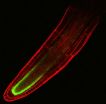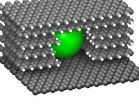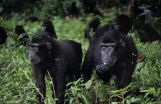(Press-News.org) This press release is available in German and Spanish.
Santiago de Chile/Leipzig. Already nowadays ten per cent or more of the population in the Metropolitan Region of Santiago de Chile is affected by extreme heat or floods. These threats will tend to increase due to the continuous expansion of the Chilean capital, the consequent changes in land use and the influences of climate change. Because of that, the international research project ClimateAdaptationSantiago (CAS) has developed, during the last three years, an Adaptation Plan to climate change for the metropolitan region and has handed it over to the Regional Government and the Regional Secretary of the Ministry of Environment. This Plan was developed by German and Chilean scientists working at the Helmholtz-Centre for Environmental Research (UFZ), the Karlsruhe Institute for Technology (KIT), the Universidad de Chile and the Pontificia Universidad Católica de Chile, in the frame of an intensive participative process together which multiple local actors.
The adaptation plan is the answer to the climate changes and impacts for the metropolitan region, likewise estimated in within the scope of the project. The scientists of the CAS-Project expect significant changes till the year 2050. According to that, they count with an increase of one to two degree Celsius in the yearly average maximum and minimum temperatures; with it, the days with temperatures above 30 degree Celsius will most likely also increase. Precipitations instead, could decrease up to a 20%. In fact, precipitation will concentrate on fewer days than today and, as a consequence, the risk of floods will rise, according to the scenarios. Given the growing population and further expansion of the city, combined with the predicted climate changes, the scientists expect problems in the water and energy supply, as well as an increase in the population potentially exposed to extreme heat and floods.
The 14 measures, developed jointly by scientists and the involved stakeholders, include among others, the creation of a monitoring system, more green areas in the city and the usage of existing irrigation canals in the Andean piedmont to reduce the risk of floods. Furthermore, measures are recommended oriented to increase participation and information for the population, and a program to establish cooling roofs for lower-income households. The implementation of the Plan and its measures is supported by the GORE and the SEREMI MA. In accordance to that, a public consultancy of the Plan is scheduled for the next months and further concrete steps towards implementation are also planned.
Furthermore, in the frame of the CAS-Project a Regional Learning Network with scientists and decision-makers was built, in cooperation with the UN CEPAL. This network includes six Latin American megacities (Buenos Aires, Bogotá, Lima, México, Santiago de Chile and São Paulo). This Regional Learning Network of scientists and decision-makers was established with the aim of comprehending and discussing the "practical status" of urban adaptation to climate change, as well as of fostering the exchange between the cities in the region. Within the research project, three workshops were organized to reach these aims. "The first workshop addressed the scientific exchange, the second intended to strengthen the exchange between decision-makers in different administration levels in the cities and the third workshop brought the two groups together", informed Dr. Kerstin Krellenberg from UFZ, who has coordinated the CAS-Project.
INFORMATION:
The work in the frame of the CAS-Project was financially supported by the International Climate Protection Initiative of the Federal Ministry of Environment (BMU). The Adaptation Plan is a shared result of close cooperation between politics, practice and science. Ten round tables, which were organized by the Project over the three years of project duration in Santiago, constituted the core element of the cooperation.
The work in Santiago is not done with this: an international cooperation between scientists of the Department of Urban and Environmental Sociology at the UFZ and scientists at the Pontificia Universidad Católica de Chile was successful during the first phase of funding round of Helmholtz International Research Groups. The Chilean-German investigation group will concentrate during the next three years on additional options of adaptation to climate change at local level in Latin-American cities on the basis of urban vulnerability.
Kerstin Krellenberg/Tilo Arnhold
More Information:
Dr. Kerstin Krellenberg/Dipl.-Soz. Katrin Barth
Helmholtz-Zentrum für Umweltforschung (UFZ)
Telephone: +49-341-235-1608, -1731
http://www.ufz.de/index.php?de=15224
http://www.ufz.de/index.php?de=12811
or:
Tilo Arnhold (UFZ-Press Office)
Telephone: +49-341-235-1635
http://www.ufz.de/index.php?de=640
Additional Links:
ClimateAdaptationSantiago (CAS):
Project Coordinators: Dr. Kerstin Krellenberg, Dipl.-Soz. Katrin Barth
Head of the Project: Prof. Dr. Bernd Hansjürgens
http://www.ufz.de/climate-adaptation-santiago/
International Climate Protection Initiative (IKI):
http://www.bmu-klimaschutzinitiative.de/
Santiago, Chile, will get drier and warmer
Scientists from Chile and Germany present recommendations of how to adapt the Latin American Megacity to climate change
2013-01-23
ELSE PRESS RELEASES FROM THIS DATE:
Breakthrough: How salt stops plant growth
2013-01-23
Washington, D.C. —Until now it has not been clear how salt, a scourge to agriculture, halts the growth of the plant-root system. A team of researchers, led by the Carnegie Institution's José Dinneny and Lina Duan, found that not all types of roots are equally inhibited. They discovered that an inner layer of tissue in the branching roots that anchor the plant is sensitive to salt and activates a stress hormone, which stops root growth. The study, published in the current issue of The Plant Cell, is a boon for understanding the stress response and for developing salt-resistant ...
Reinventing retirement: New pathways, new arrangements, new meanings
2013-01-23
Retirement involves a set of institutional arrangements combined with socio-cultural meanings to sustain a distinct retirement phase in life course and career pathways. The articles outline that recent forces of change may lead to reinvention of retirement. There are factors that must be recognized as having a significant impact such as the fact that life expectancy and health status of adults over 60 has increased dramatically in recent years. Reinvention could involve change to one or more of the institutional arrangements supporting retirement. New financial risks and ...
Nanoparticles digging the world's smallest tunnels
2013-01-23
This press release is available in German.
The world's smallest tunnels have a width of a few nanometers only. Researchers from Karlsruhe Institute of Technology (KIT) and Rice University, USA, have dug such tunnels into graphite samples. This will allow structuring of the interior of materials through self-organization in the nanometer range and tailoring of nanoporous graphite for applications in medicine and battery technology. Results are now presented in the scientific journal Nature Communications (DOI: 10.1038/ncomms2399).
The tunnels are manufactured applying ...
Researchers create self-healing, stretchable wires using liquid metal
2013-01-23
Researchers from North Carolina State University have developed elastic, self-healing wires in which both the liquid-metal core and the polymer sheath reconnect at the molecular level after being severed.
"Because we're using liquid metal, these wires have excellent conductive properties," says Dr. Michael Dickey, an assistant professor of chemical and biomolecular engineering at NC State and co-author of a paper on the work. "And because the wires are also elastic and self-healing, they have a lot of potential for use in technologies that could be exposed to high-stress ...
Learn to be more understanding by watching The Bachelor (this season, anyway)
2013-01-23
A new USC study finds evidence suggesting that the brain works hard to understand those who have different bodies when watching them in action.
According to the study's lead author, the finding supports initiatives to include more individuals with physical differences in mainstream media – such as Sarah Herron, a contestant on ABC's The Bachelor this season, who was born with a foreshortened left arm.
"Generally, it's considered impolite to stare. But what these results suggest is that we need to look. It's through this visual experience that we're able to make sense ...
New way to identify 'smoked' grapes and wines
2013-01-23
With climate change sparking concern about an increased risk of wildfires, scientists are reporting development of a way to detect grapes exposed to smoke from those fires, which otherwise could be vented into bad-tasting wine. Their report on the method for detecting smoke taint in both grapes and wine appears in ACS' Journal of Agricultural and Food Chemistry.
Yoji Hayasaka and colleagues point out that Australia and other areas of the world are experiencing an increase in bush and wildfires, which may continue and intensify with global climate change. Smoke from those ...
Scientists underestimated potential for Tohoku quake. Now what?
2013-01-23
CORVALLIS, Ore. – The massive Tohoku, Japan, earthquake in 2011 and Sumatra-Andaman superquake in 2004 stunned scientists because neither region was thought to be capable of producing a megathrust earthquake with a magnitude exceeding 8.4.
Now earthquake scientists are going back to the proverbial drawing board and admitting that existing predictive models looking at maximum earthquake size are no longer valid.
In a new analysis published in the journal Seismological Research Letters, a team of scientists led by Oregon State University's Chris Goldfinger describes how ...
Putting the squeeze on cells
2013-01-23
CAMBRIDGE, Mass. — Living cells are surrounded by a membrane that tightly regulates what gets in and out of the cell. This barrier is necessary for cells to control their internal environment, but it makes it more difficult for scientists to deliver large molecules such as nanoparticles for imaging, or proteins that can reprogram them into pluripotent stem cells.
Researchers from MIT have now found a safe and efficient way to get large molecules through the cell membrane, by squeezing the cells through a narrow constriction that opens up tiny, temporary holes in the membrane. ...
Panel recommends changing name of common disorder in women
2013-01-23
An independent panel convened by the National Institutes of Health has concluded that the name of a common hormone disorder in women, polycystic ovary syndrome (PCOS), causes confusion and is a barrier to research progress and effective patient care. The current name focuses on a criterion — ovarian cysts — which is neither necessary nor sufficient to diagnose the syndrome. In a report released today, the panel recommended assigning a new name that more accurately reflects the disorder.
"The name PCOS is a distraction that impedes progress. It is time to assign a name ...
Better outlook for dwindling black macaque population in Indonesia
2013-01-23
Since at least the 1970s, the population of critically endangered Sulawesi black macaques living in an Indonesian nature reserve has been dropping. But a new study by researchers at the University of Washington and in Indonesia shows that the population has stabilized over the past decade.
The findings, published in the January issue of the American Journal of Primatology, are from the longest ongoing survey of Macaca nigra and are among the first evidence that the monkeys may be in better shape.
"Fifteen years ago it looked like this macaque population would continue ...
LAST 30 PRESS RELEASES:
COVID-19 leaves a lasting mark on the human brain
Scientists use ultrasound to soften and treat cancer tumors without damaging healthy tissue
Community swimming program for Black youth boosts skills, sense of belonging, study finds
Specific depressive symptoms in midlife linked to increased dementia risk
An ‘illuminating’ design sheds light on cholesterol
Who is more likely to get long COVID?
Study showcases resilience and rapid growth of “living rocks”
Naval Research Lab diver earns Office of Naval Research 2025 Sailor of the Year
New Mayo-led study establishes practical definition for rapidly progressive dementia
Fossil fuel industry’s “climate false solutions” reinforce its power and aggravate environmental injustice
Researchers reveal bias in a widely used measure of algorithm performance
Alcohol causes cancer. A study from IOCB Prague confirms damage to DNA and shows how cells defend against it
Hidden viruses in wastewater treatment may shape public health risks, study finds
Unlock the power of nature: how biomass can transform climate mitigation
Biochar reshapes hidden soil microbes that capture carbon dioxide in farmland
Reducing saturated fat intake shows mortality benefit, but only in high-risk individuals
Manta rays create mobile ecosystems, study finds
Study: Mixed results in using lipoic acid to treat progressive multiple sclerosis
Norbert Holtkamp appointed director of Fermi National Accelerator Laboratory
New agentic AI platform accelerates advanced optics design
Biologists discover neurons use physical signals — not electricity — to stabilize communication
Researchers discover that a hormone can access the brain by hitchhiking
University of Oklahoma researcher awarded funding to pursue AI-powered material design
Exploring how the visual system recovers following injury
Support for parents with infants at pediatric check-ups leads to better reading and math skills in elementary school
Kids’ behavioral health is a growing share of family health costs
Day & night: Cancer disrupts the brain’s natural rhythm
COVID-19 vaccination significantly reduces risk to pregnant women and baby
The role of vaccination in maternal and perinatal outcomes associated with COVID-19 in pregnancy
Mayo Clinic smartwatch system helps parents shorten and defuse children's severe tantrums early
[Press-News.org] Santiago, Chile, will get drier and warmerScientists from Chile and Germany present recommendations of how to adapt the Latin American Megacity to climate change




